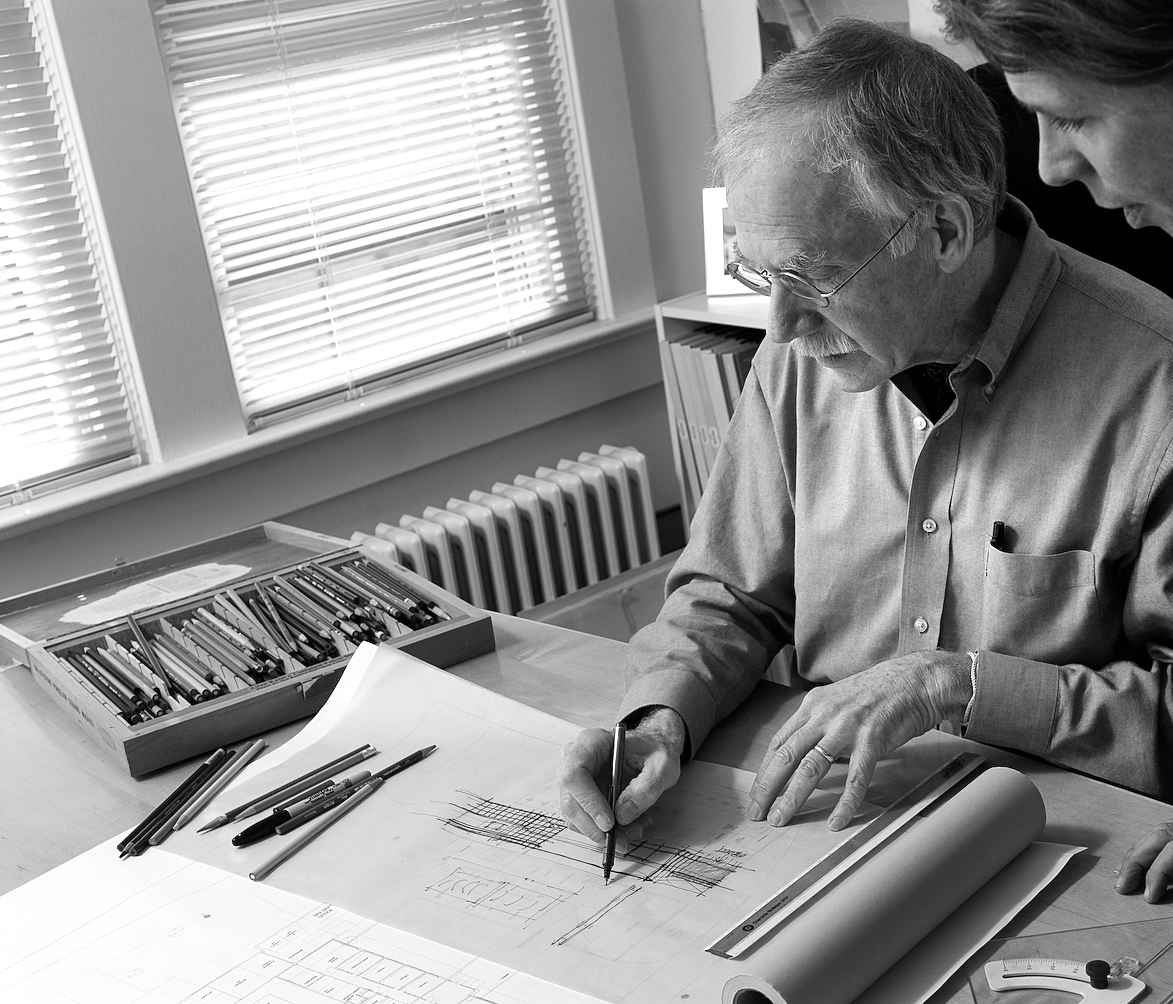KSS Architects co-founder Allan Kehrt, FAIA, LEED AP, PP will step down from his role as senior design partner to an emeritus position at the beginning of 2012 - a move that has been ongoing for more than 10 years as part of the firm's ownership transition plan.
Since establishing KSS Architects in 1983 with colleagues Michael Shatken and Rafael Sharon, Kehrt has helped the firm grow from a staff of three focused on residential design, into a 40-person company with offices in Princeton and Philadelphia. With the leadership of its six partners - Kehrt, Shatken, Edmund Klimek, Pamela Lucas Rew, David Zaiser, and Merilee Meacock - KSS has risen above recent economic challenges and developed an award-winning portfolio of projects across the nation in the markets of higher education, K-12 education, industrial, commercial, corporate interiors, municipal design and sustainable design.
"The past year was one of the strongest we have had in the market," Shatken said. "Allan shaped our core values about design excellence as well as client relationships, which all of the partners have instilled throughout the firm. As a result, our breadth of work and our national presence continue to grow."
"I will admit it's hard to back away from KSS after 28 years," added Kehrt. "But it's is something we have been planning for many years. I have absolute confidence that Michael and our next generation will continue to add to the exceptional achievements of KSS for many, many years. It's been a great ride!"
Kehrt's legacy of projects include Rutgers University's Biomedical Engineering Building, the renovation and expansion of Cornell University School of Hotel Administration, the recent new campus center at The Richard Stockton College of New Jersey and Princeton Township's Municipal Complex.
In 2001, Kehrt was elevated to the American Institute of Architects' College of Fellows, an honor bestowed to only 3 percent of all registered architects in the U.S. In 2008, Kehrt was nominated to the AIA's Jury of Fellows, a three-year post, and served as a chairman in 2010. Kehrt was also named Architect of the Year by AIA New Jersey in 2006.
Active in the design education community, Allan has served as faculty, guest lecturer, or juror at many colleges of architecture in the east, including the University of Pennsylvania, Philadelphia University, Moore College of Art & Design, New Jersey Institute of Technology and his alma mater Virginia Polytechnic Institute and State University, where he will continue on its Advisory Board. He has presented and lectured for many professional organizations including the American Institute of Architects and the Society of College and University Planning. BD+C
Related Stories
| Nov 2, 2010
Energy Analysis No Longer a Luxury
Back in the halcyon days of 2006, energy analysis of building design and performance was a luxury. Sure, many forward-thinking AEC firms ran their designs through services such as Autodesk’s Green Building Studio and IES’s Virtual Environment, and some facility managers used Honeywell’s Energy Manager and other monitoring software. Today, however, knowing exactly how much energy your building will produce and use is survival of the fittest as energy costs and green design requirements demand precision.
| Nov 2, 2010
Yudelson: ‘If It Doesn’t Perform, It Can’t Be Green’
Jerry Yudelson, prolific author and veteran green building expert, challenges Building Teams to think big when it comes to controlling energy use and reducing carbon emissions in buildings.
| Nov 2, 2010
Historic changes to commercial building energy codes drive energy efficiency, emissions reductions
Revisions to the commercial section of the 2012 International Energy Conservation Code (IECC) represent the largest single-step efficiency increase in the history of the national, model energy. The changes mean that new and renovated buildings constructed in jurisdictions that follow the 2012 IECC will use 30% less energy than those built to current standards.
| Nov 1, 2010
Sustainable, mixed-income housing to revitalize community
The $41 million Arlington Grove mixed-use development in St. Louis is viewed as a major step in revitalizing the community. Developed by McCormack Baron Salazar with KAI Design & Build (architect, MEP, GC), the project will add 112 new and renovated mixed-income rental units (market rate, low-income, and public housing) totaling 162,000 sf, plus 5,000 sf of commercial/retail space.
| Nov 1, 2010
John Pearce: First thing I tell designers: Do your homework!
John Pearce, FAIA, University Architect at Duke University, Durham, N.C., tells BD+C’s Robert Cassidy about the school’s construction plans and sustainability efforts, how to land work at Duke, and why he’s proceeding with caution when it comes to BIM.
| Nov 1, 2010
Vancouver’s former Olympic Village shoots for Gold
The first tenants of the Millennium Water development in Vancouver, B.C., were Olympic athletes competing in the 2010 Winter Games. Now the former Olympic Village, located on a 17-acre brownfield site, is being transformed into a residential neighborhood targeting LEED ND Gold. The buildings are expected to consume 30-70% less energy than comparable structures.
| Oct 27, 2010
Grid-neutral education complex to serve students, community
MVE Institutional designed the Downtown Educational Complex in Oakland, Calif., to serve as an educational facility, community center, and grid-neutral green building. The 123,000-sf complex, now under construction on a 5.5-acre site in the city’s Lake Merritt neighborhood, will be built in two phases, the first expected to be completed in spring 2012 and the second in fall 2014.
| Oct 21, 2010
GSA confirms new LEED Gold requirement
The General Services Administration has increased its sustainability requirements and now mandates LEED Gold for its projects.
| Oct 18, 2010
World’s first zero-carbon city on track in Abu Dhabi
Masdar City, the world’s only zero-carbon city, is on track to be built in Abu Dhabi, with completion expected as early as 2020. Foster + Partners developed the $22 billion city’s master plan, with Adrian Smith + Gordon Gill Architecture, Aedas, and Lava Architects designing buildings for the project’s first phase, which is on track to be ready for occupancy by 2015.














